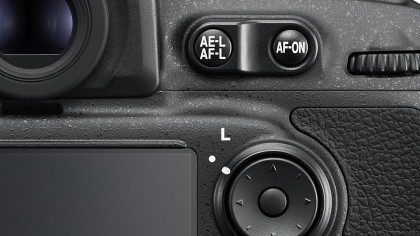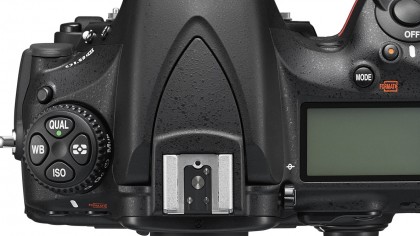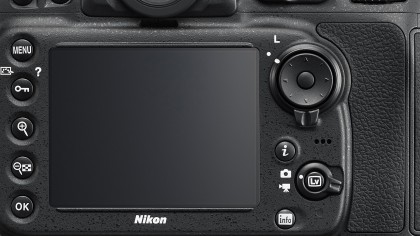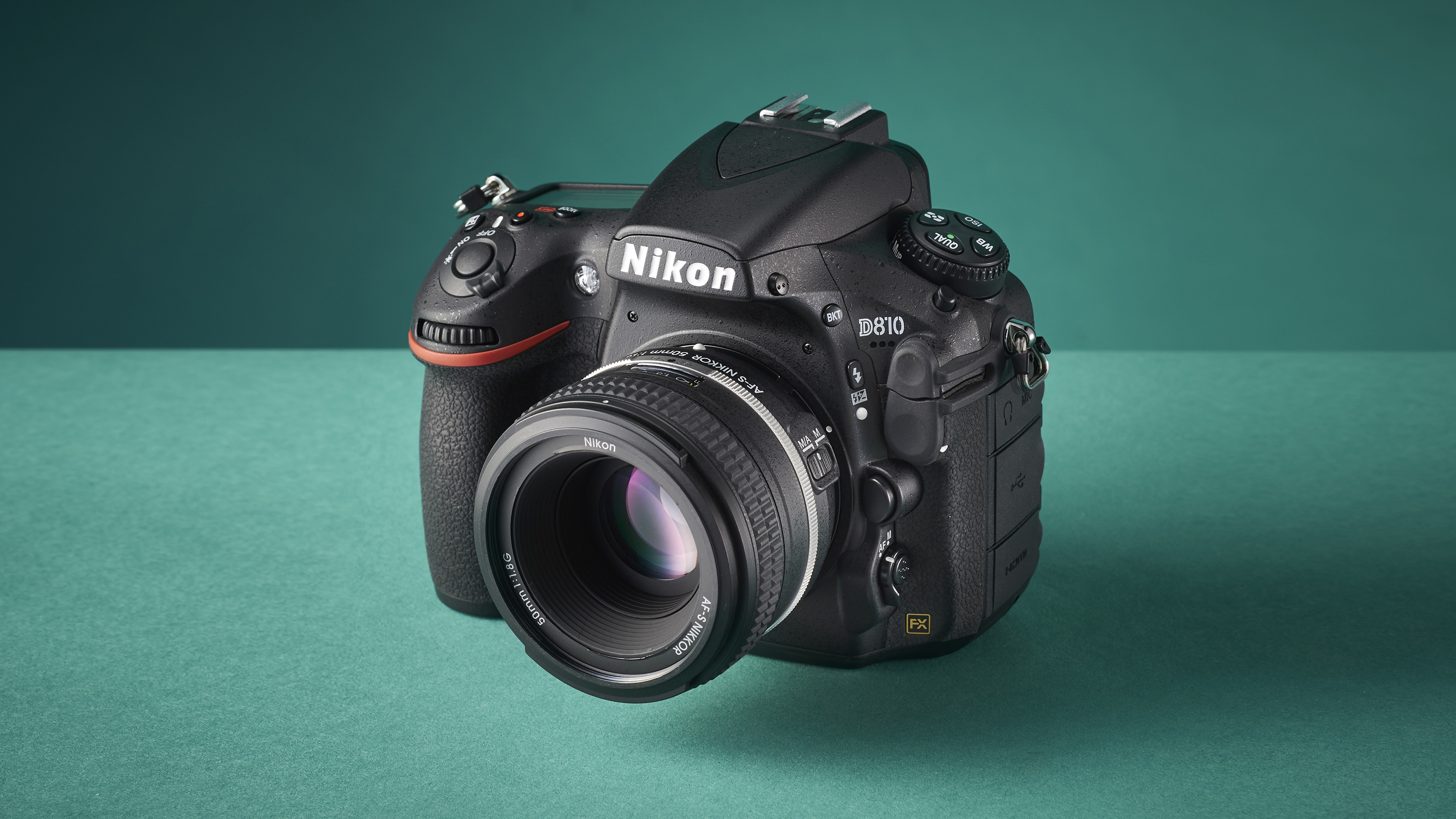Why you can trust TechRadar
Any Nikon D800 user who picks up a Nikon D810 is going to find themselves right at home because there are only a few fairly subtle design changes introduced with the new model. The grip on the back of the camera, for example, is a little more pronounced, the front grip is slightly more ergonomically shaped and the memory card door feels more durable.
The changes to the grips makes the new camera feel more comfortable and secure in your hand than the D800 it replaces, but there's not much in it.
The metering switch on the back of the D800 has also gone to make the AE-Lock/AF-Lock and AF-on buttons easier to reach and operate with the camera held to the eye. The metering options are now accessed via what was the bracketing button above the drive mode dial on the top of the camera. I generally prefer a switch or dial for making selections if possible because it's usually quicker and easier, but don't think the change to a button for metering is a deal-breaker.

The most noticeable difference, however, is the introduction of an 'i' button on the back of the camera. This gives access to some key settings such as Active D-Lighting and Bracketing and it works in the same way as it does on other recent Nikon SLRs. It is particularly useful when shooting in Live View or Video mode and it provides the means of accessing the Split-screen view.
However, as we have said before, it seems strange having options to change some of the customisation settings via this information screen in reflex shooting mode. I think it would be better for the options to change the functions of the Preview and Fn buttons, for example, to be in the main menu. This would free up space in the information screen for other features such as Exposure Delay that may need to be accessed on a shot-by-shot basis.
I'd also like to be able to make adjustments via the Information display that pops up when the Info button is pressed. As it stands this displays all the key camera settings, but they can't be selected or adjusted. It feels like a waste and a bit of an overlap in buttons.

As on the Nikon D800 and the brand's enthusiast and professional-level cameras such as the Nikon D7100 and Nikon D4S, there's a focus mode control switch and button next to the lens mount within easy reach of your left hand when using the camera. The switch is used to set automatic or manual focusing while the button is used in conjunction with the camera's two control dials. Rotating the rear dial enables switching between Single AF (AF-S) and Continuous AF (AF-C), while the front dial can be used to toggle between the AF point selection options (including the new Group-area AF mode) available in each mode.
When using the Nikon D810 for the first time in earnest I had to double-check that it wasn't set to Quiet or Quiet Continuous mode because the mirror and shutter movements are much quieter and feel more dampened than those of the Nikon D800. It makes the camera much more discrete and somehow conveys a sense of higher quality.
Operation in the Quiet modes is only slightly quieter than in the normal shooting modes. In standard Quiet mode it separates the sounds of the mirror lifting and the exposure being taken from that of the mirror flipping back down into place. It's quite a bit quieter than the D800 in Quiet mode, but not dramatically different from its own operation in standard mode.

Another operational difference becomes apparent when shooting in Live View mode, as the Nikon D810 displays the images much more quickly than the D800 after a shot has been taken. The contrast detection autofocus system, however, operates at a similar speed. It's not a patch on that of a compact system camera, but it's usable provided the camera is held on a tripod.
As with other Nikon SLRs, the Picture Control options can be accessed via the menu or by pressing the shortcut button which doubles as the image-lock button in review mode. The new Clarity option can be adjusted across 11 levels (+/-5). If you shoot raw images, however, you can adjust this over a much wider scale in Adobe Camera Raw, which now has been updated to make it compatible with Nikon D810 raw files.
Current page: Build and handling
Prev Page Nikon D810 vs D800/D800E: what's the difference? Next Page Performance